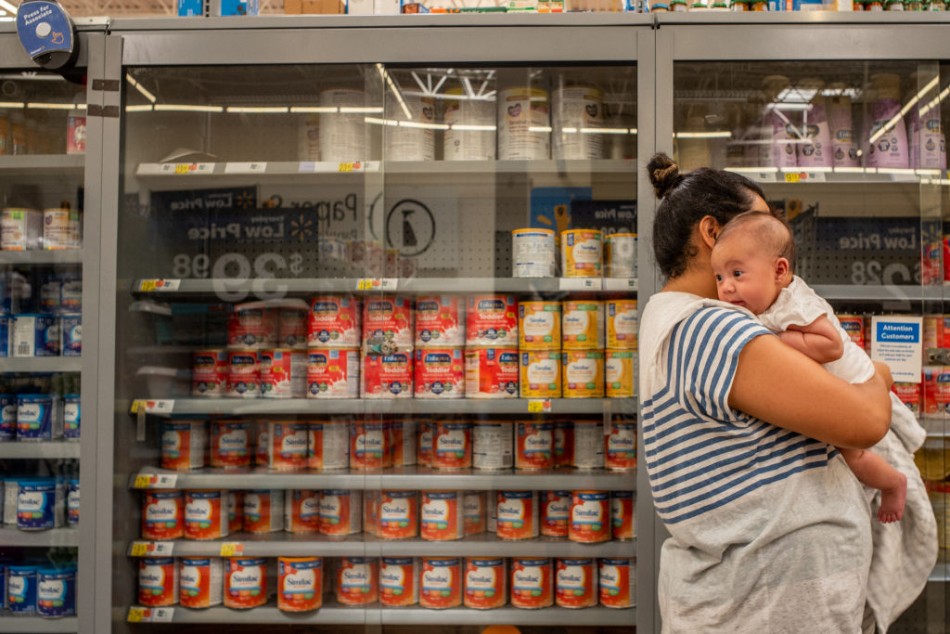Do Expensive Infant Formula Provide Better Nutrition? Parents Want To Know

Parents worry that they are giving their babies a lesser quality of nutrition if they do not feed them expensive infant formula. What is the difference between the latter and the cheaper ones? Or are there any differences at all?
Infants can only feed on either breast milk or formula. Thus, a family's expenses can increase to thousands of dollars a year when the baby is on formula, making it one of the biggest expenditures during the first to two years of a baby.
"Many parents don't know that infant formula is the single most highly regulated food product in the country. (This makes sense as ) infants are inherently vulnerable and have very specific nutrient needs in the first year of life," The Formula Mom Mallory Whitmore expressed.
In order to save money, parents try to buy formulas in bulk or choose the lower-cost generic formulas over those with name brands. However, they worry that by buying the cheaper formula, their babies will get the nutrition that is of lower quality.
Moreover, parents may also have heard that infant formulas with European brands are "cleaner and superior" compared to the ones sold in America and thus are wondering whether they should purchase the former.
All Infant Formulas Have the Same Balance of Nutrients
Could it be true that more expensive infant formula or those manufactured in Europe are actually better for babies' health?
The US Food and Drug Administration has standardized the ingredients in what infant formula can enter the market and be sold to consumers.
"Companies manufacturing or distributing formula in the United States must be registered with the FDA. New infant formulas must undergo a review process before being sold," registered dietitian and the founder of Formula Sense Lisa Richardson stated.
Before an infant formula receives an FDA-approved badge, it must pass the following criteria:
-
It should include minimum levels of 29 nutrients, and not go beyond a maximum level for nine of those nutrients
-
Proof such as a clinical trial should be presented that any "never-before-used ingredients are safe"
-
It should be produced in a regularly-inspected, also FDA-approved facility
When infant formulas are FDA-approved in the US, it means that it has met the "nutrient specifications listed in FDA regulations." Thus, according to Whitmore, who also works for the formula brand Bobbie, "all infant formulas on the market are safe and nutritionally complete for infants 0-1."
Generally speaking, all infant formulas in the market, both the generic and retail store brands, have the same count of proteins, fats and carbohydrates.
In fact, the brands Walmart, Target, Sam's Club, Amazon and Kroger, are manufactured by one and the same company - Perrigo.
EU vs. US infant formula
"No matter which store brand you buy, what's inside the can is the same. Store brand formulas are mimics of familiar big-name formula brands," which means that there is a very minimal difference, if there is, Richardson revealed.
Moreover, she stressed that "formula ingredient innovations like whole fat milk or specialty proteins" can be found in the more expensive formulas. However, the nutritional profile of all formulas in the US is basically the same.
One exception would have to be the hypoallergenic formulas that are "marketed as sensitive, comfort, tender, or gentle." This infant formula is specifically given to babies who cannot digest regular formula.
In terms of the difference between EU and US infant formula, Richardson provided four factors to Huffpost.
-
EU infant formula requirements have a severe limit of pesticide residues as compared to the US, where there is "no regulations on pesticides specific to infant formula," since pesticides are everywhere, even in breastmilk. This is why European formulas are considered "cleaner."
-
European organic formula has provided two kinds of formula for infants — Stage 1 for infants up to six months old and Stage 2 for those more than six to 12 months old. The difference between the two is the different mix of proteins depending on the needs of the baby. In America, all formulas are marketed for babies from birth to 12 months old.
-
American formulas have 50 to 80 percent higher iron content than EU formulas because the American Academy of Pediatrics recommends babies to have higher daily iron intake as protection against iron-deficiency anemia.
-
EU formulas are not allowed to contain corn syrup or corn syrup solids, only other sugars like lactose. They, on the other hand, contain DHA, an omega-3 fatty acid. In the US, there is no such prohibition or requirements respectively.
Pediatrician Dr. Janine Zee-Cheng, however, warns parents to be careful in purchasing infant formula abroad as "counterfeit formula does exist."
Related Article: Deadly Bacteria Detected in Baby Formula: FDA Admits to Knowing Months Before Product Recall
© 2024 ParentHerald.com All rights reserved. Do not reproduce without permission.
* This is a contributed article and this content does not necessarily represent the views of parentherald.com
